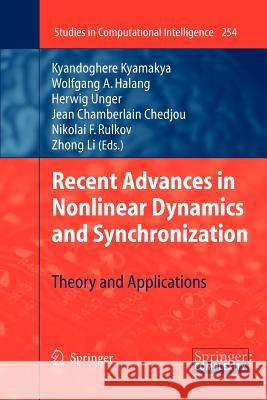Recent Advances in Nonlinear Dynamics and Synchronization: Theory and Applications » książka
Recent Advances in Nonlinear Dynamics and Synchronization: Theory and Applications
ISBN-13: 9783642260575 / Angielski / Miękka / 2012 / 399 str.
Recent Advances in Nonlinear Dynamics and Synchronization: Theory and Applications
ISBN-13: 9783642260575 / Angielski / Miękka / 2012 / 399 str.
(netto: 576,41 VAT: 5%)
Najniższa cena z 30 dni: 578,30
ok. 22 dni roboczych
Bez gwarancji dostawy przed świętami
Darmowa dostawa!
In essence, the dynamics of real world systems (i.e. engineered systems, natural systems, social systesms, etc.) is nonlinear. The analysis of this nonlinear character is generally performed through both observational and modeling processes aiming at deriving appropriate models (mathematical, logical, graphical, etc.) to simulate or mimic the spatiotemporal dynamics of the given systems. The complex intrinsic nature of these systems (i.e. nonlinearity and spatiotemporal dynamics) can lead to striking dynamical behaviors such as regular or irregular, stable or unstable, periodicity or multi-periodicity, torus or chaotic dynamics. The various potential applications of the knowledge about such dynamics in technical sciences (engineering) are being intensively demonstrated by diverse ongoing research activities worldwide. However, both the modeling and the control of the nonlinear dynamics in a range of systems is still not yet well-understood (e.g. system models with time varying coefficients, immune systems, swarm intelligent systems, chaotic and fractal systems, stochastic systems, self-organized systems, etc.). This is due amongst others to the challenging task of establishing a precise and systematic fundamental or theoretical framework (e.g. methods and tools) to analyze, understand, explain and predict the nonlinear dynamical behavior of these systems, in some cases even in real-time. The full insight in systems' nonlinear dynamic behavior is generally achieved through approaches involving analytical, numerical and/or experimental methods.











